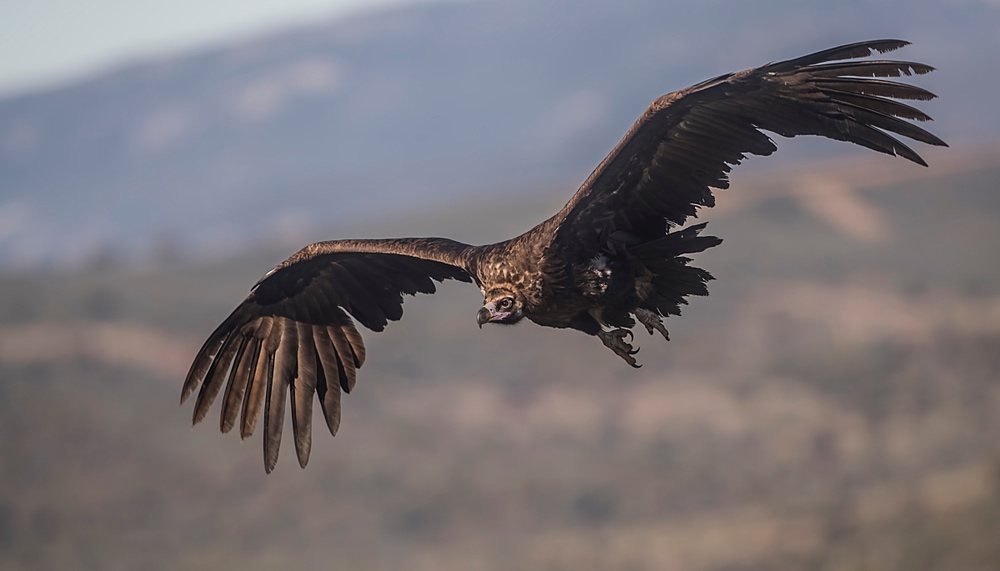
Vultures are birds that eat dead animals. Texas hosts 2 of the new world vultures out of 22 species. The most prominent ones are the Black Vulture and Turkey Vulture. New world vultures are different from the other species because of their adaptation to the North America and South America environment.
Vultures have a throat pouch that they store food for survival. Not all vultures have extra-strong beaks for tearing bones, muscles, and hides. Some are generally stronger than others which reinstates their dominance as scavengers.
The Turkey Vulture has the best sense of smell of all vulture species. It allows them to scavenge food easier than others. The new world vultures in Texas have weaker feet than the old world vultures. They do not have the best grasping ability, but they still thrive.
Here’s everything you need to know about the Vultures in Texas.
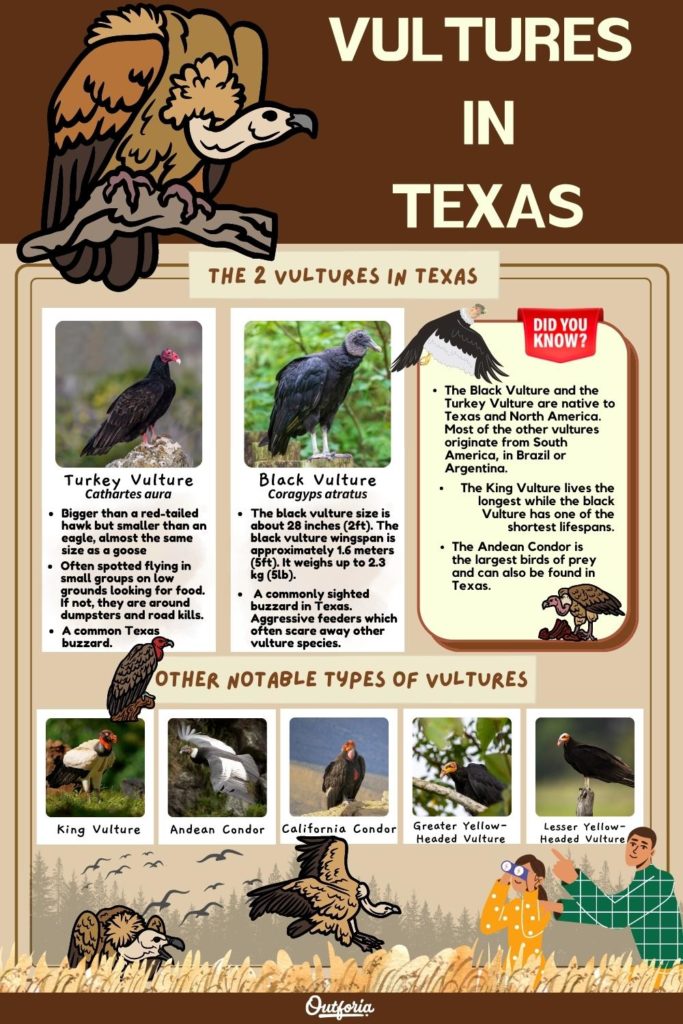
Share this image on your site
<a href="https://outforia.com/vultures-in-texas/"><img style="width:100%;" src="https://outforia.com/wp-content/uploads/2022/06/vultures-in-texas-infographic-2-683x1024.jpg"></a><br>vultures in texas <a href="https://outforia.com">Outforia</a>The 2 Different Types of Vultures in Texas
1. Turkey Vulture (Cathartes aura)
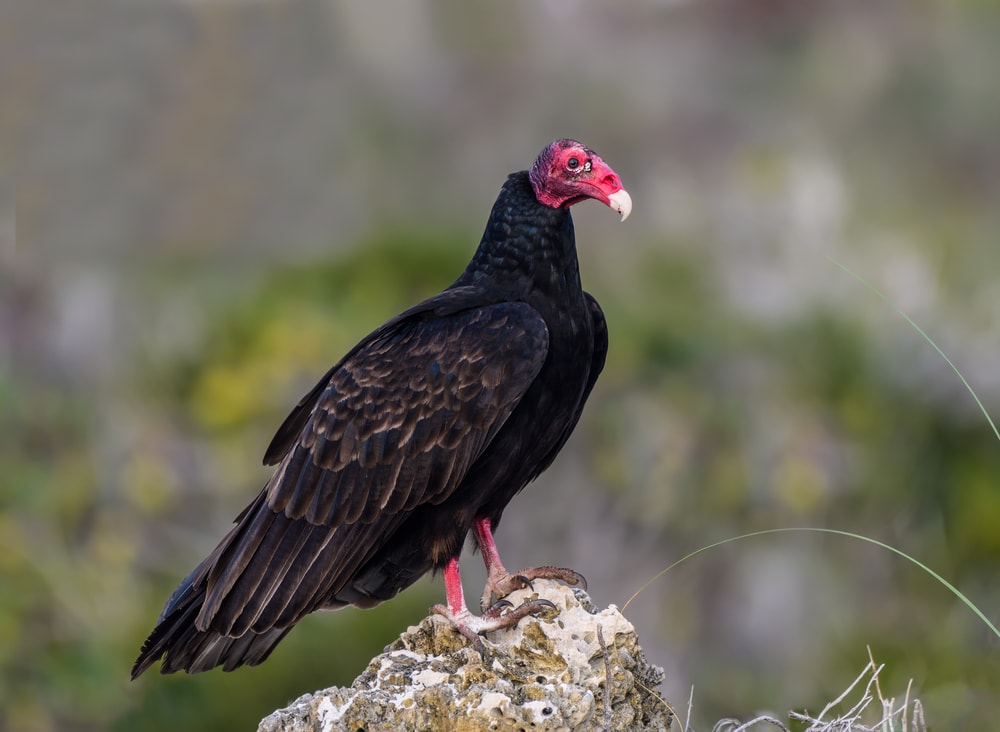
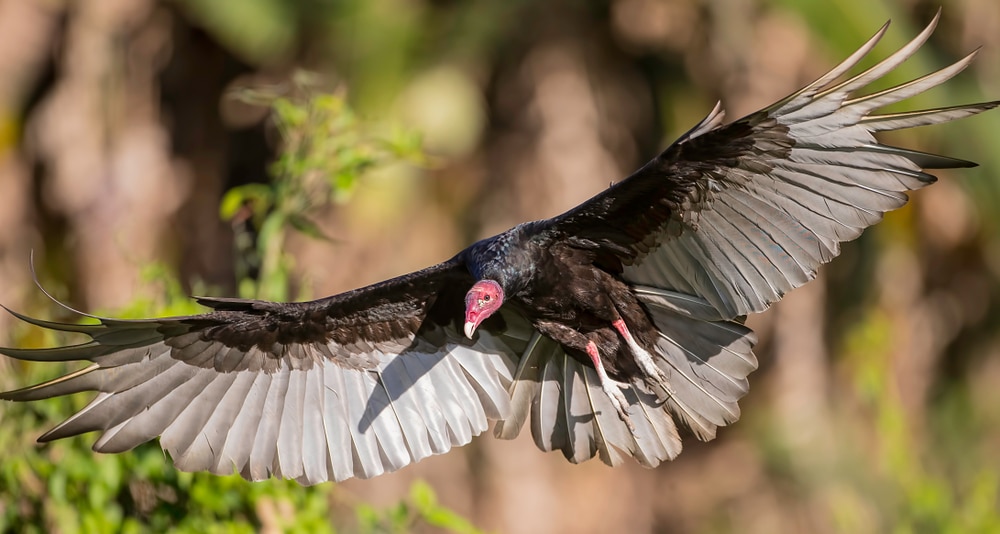
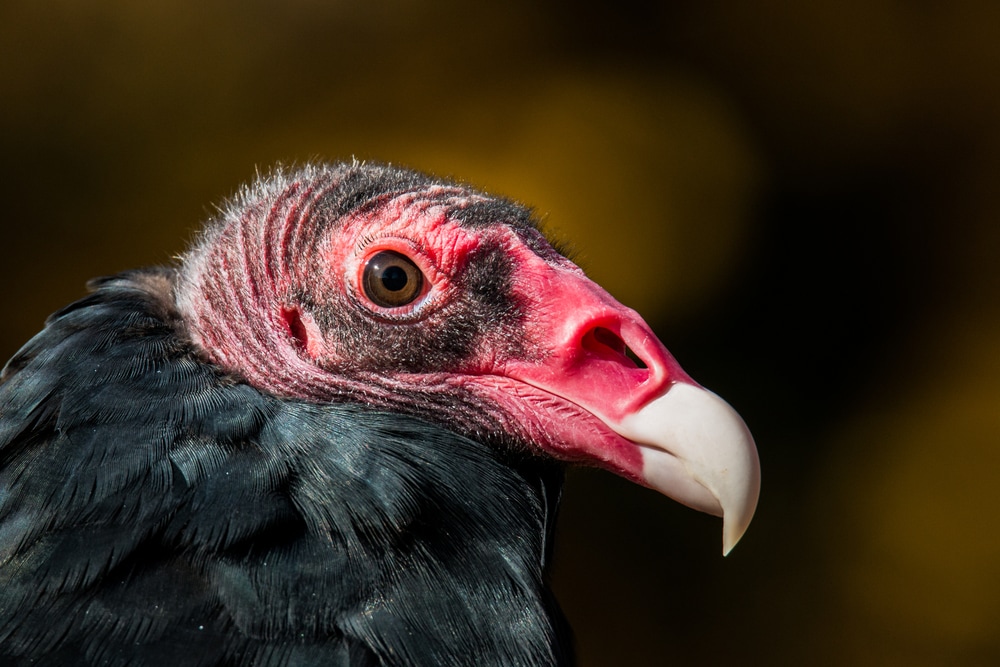
Turkey Vultures are black with broad and long wings. They have characteristic finger-like feathers at their wingtips. They have a long tail which helps them in flight. Turkey Vultures make a V-shape while flying with a low-lying head and raised wings. It is a common Texas buzzard.
The Turkey Vulture is bigger than a red-tailed hawk but smaller than an eagle. They are almost the same size as a goose. They weigh about 2kg (4lb) and grow up to 31.9 inches (2ft). They have a wingspan of approximately 70.1 inches (5ft).
Turkey Vultures have a two-toned appearance. They have pale wingtips, feather edges, and undersides with a black upper body. Their heads are red and featherless with a pale bill.
Turkey vultures are unsteady flyers with an exquisite style. They do not fly high like most other vultures. They are often spotted flying in small groups on low grounds looking for food. If not, they are around dumpsters and road kills.
2. Black Vulture (Coragyps atratus)
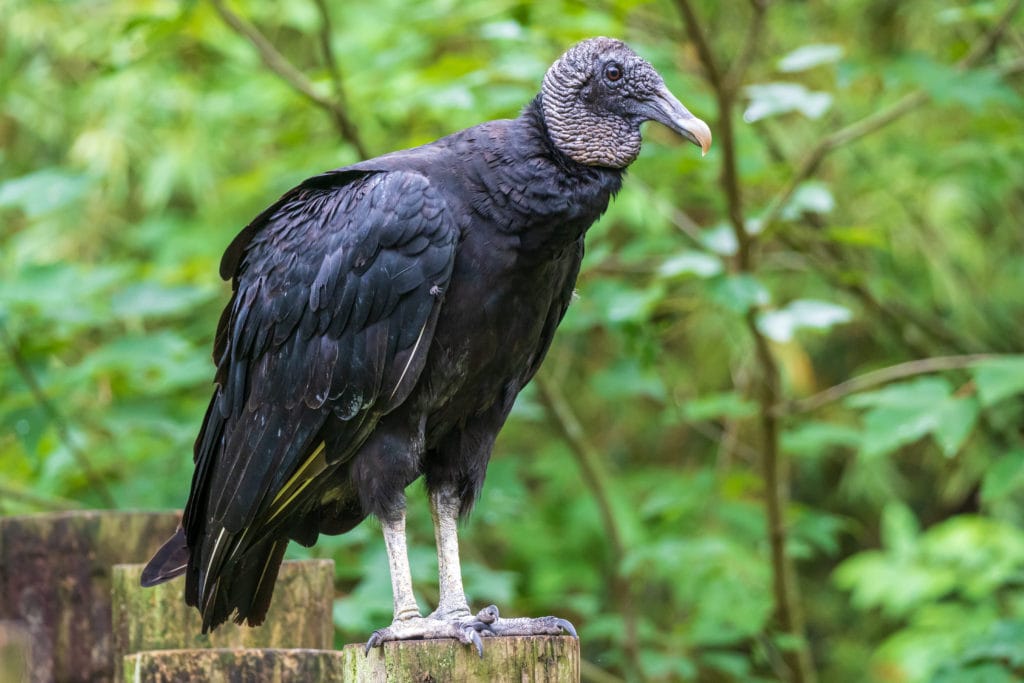
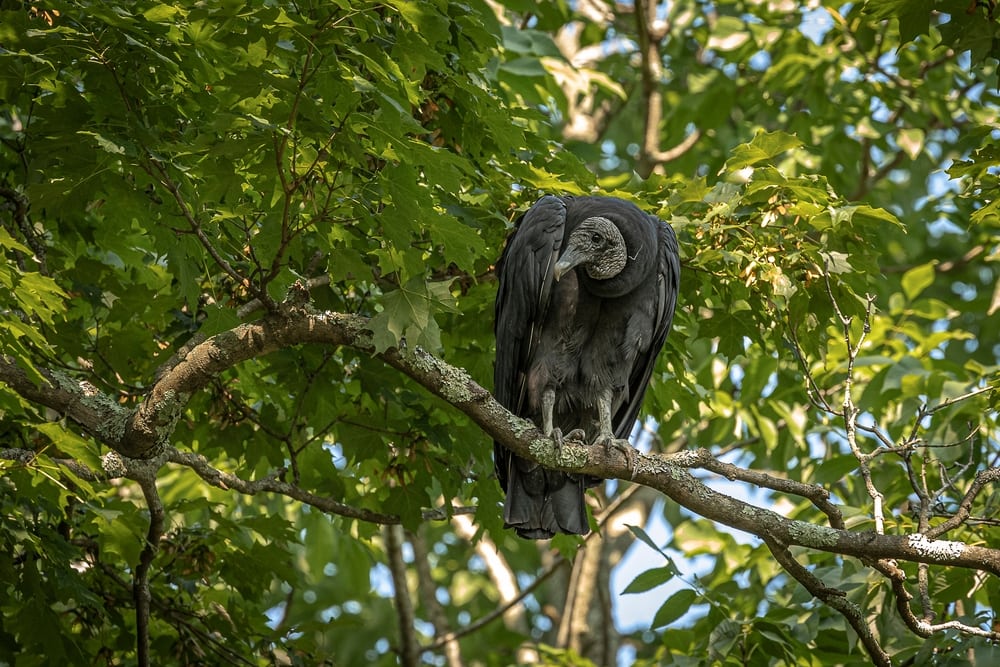
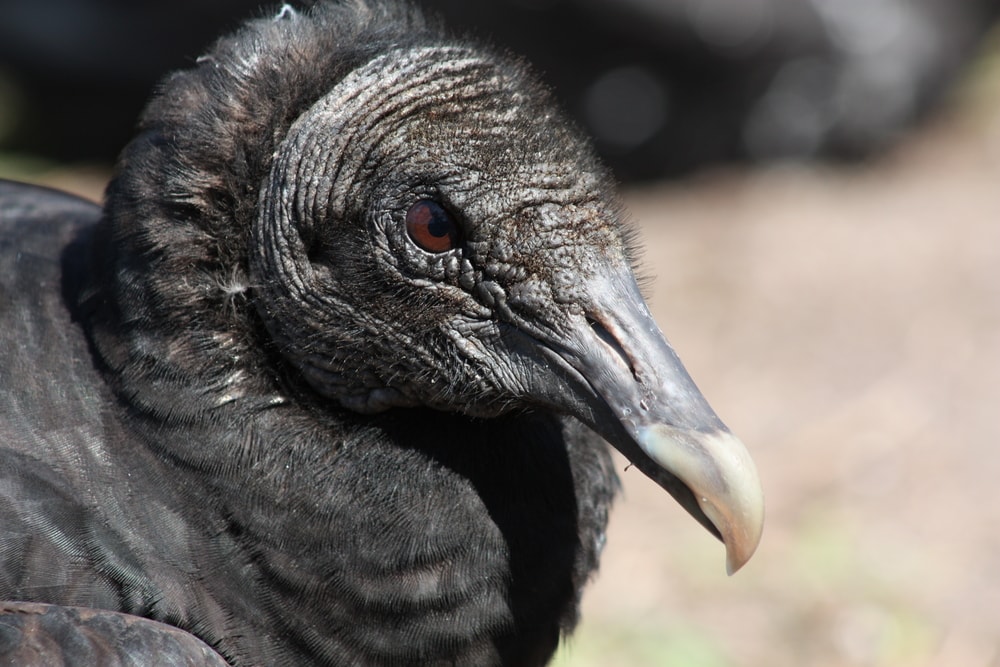
The Black Vultures dons a dark black color. It is a commonly sighted buzzard in Texas. The black vulture size is about 28 inches (2ft). The black vulture wingspan is approximately 1.6 meters (5ft). It weighs up to 2.3 kg (5lb). It eats dead animals but also kills the prey. They attack small mammals, birds, and reptiles.
The black Vulture is ready to mate in 3 years and this bird’s lifespan is about 25 years. Most of the wild vulture ages are unproven because they are pretty elusive. It isn’t easy to pinpoint the exact age they reach at maturity.
The Black Vulture likes hunting in open habitats. They roost and breed in woodlands on tall trees such as;
- Bald cypress
- Junipers
- Oaks
- Hickories
- Pines
- Sycamores
They maintain mating pairs for many years and in the same area too. They are aggressive feeders which often scare away other vulture species. The black vulture size is also intimidating. You are most likely to spot a Turkey Vulture and a black vulture in Texas.
Life cycle: Life Span, Partners, Raising young
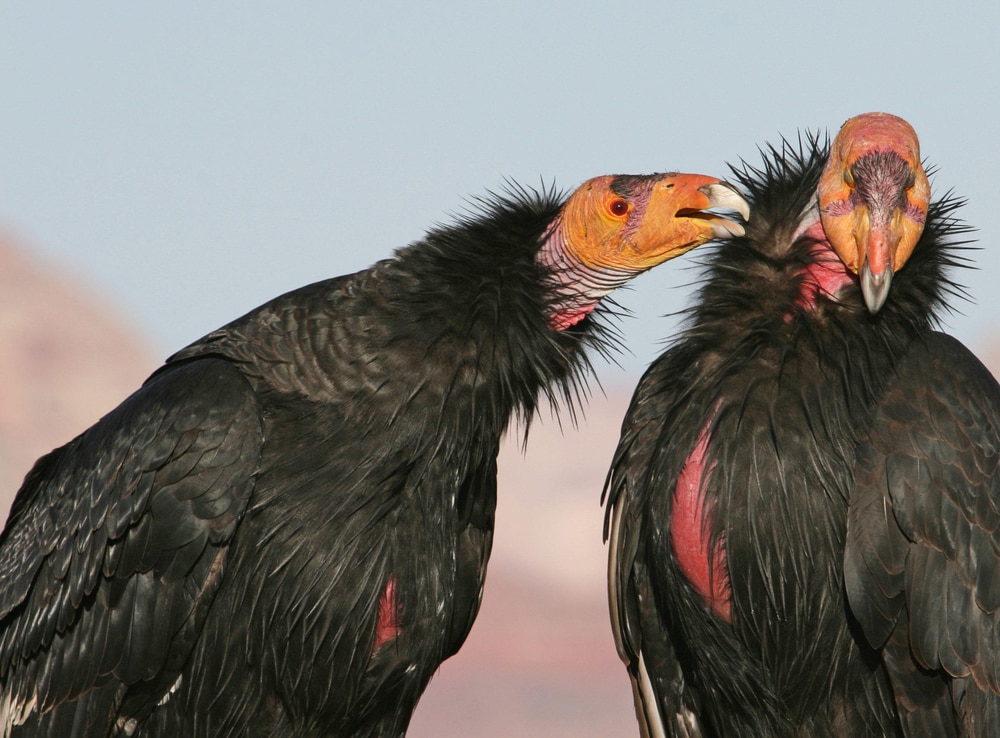
A typical vulture can live for 47 years with an average minimum of 10 years. Different species have varying lifespans, which fall within the above range.
Vultures are monogamous. Old World Vultures build a nest. New World Vultures look for cavities to lay eggs. It can be in trees, cliffs, or bare scrapes. Vultures rarely change mating partners in their lifetime. The small species lay two eggs, while the more giant species lay one egg. The vultures incubate the eggs for one to two months.
Vultures take care of their chicks until they are old enough to fend for themselves. This can take up to 6 months. They are solid and well-feathered at this point. It gives them a better chance to wander in the wild as they search for food.
Habitat and Range of Vultures
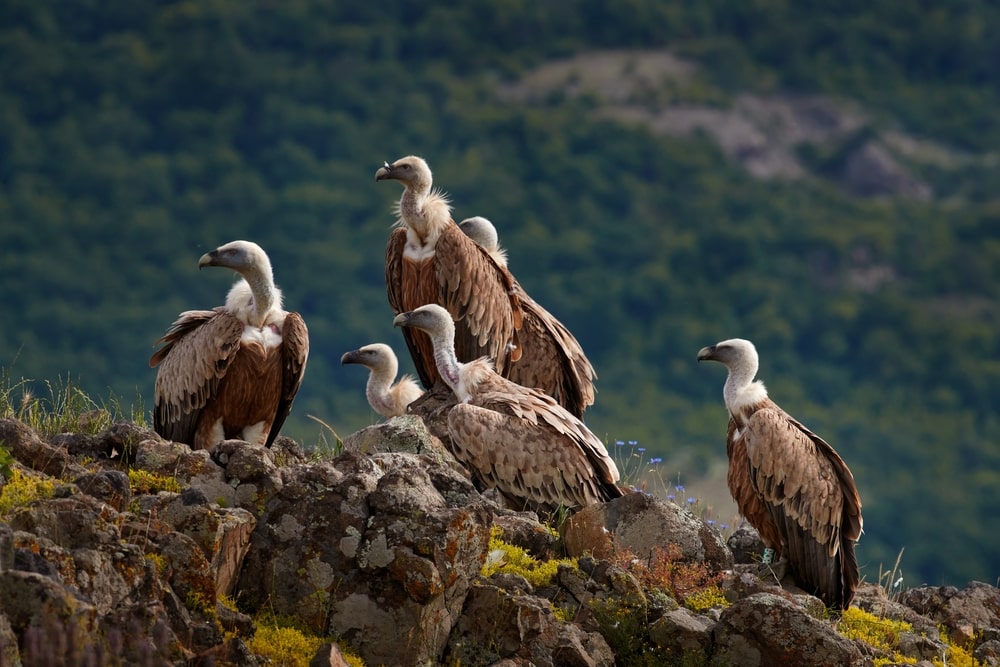
Vultures occupy different habitats. They include woodlands, grasslands, savannas, and deserts. Vultures usually form colonies near a water source. They can survive in high areas of about 3000 m (9842 ft) above sea level. They travel for an average of 200 miles (322 km) daily.
You may also like: Check out the More Than 25 Amazing Types of Falcons: Complete with Images, Facts, and More!
What Do Vultures Eat
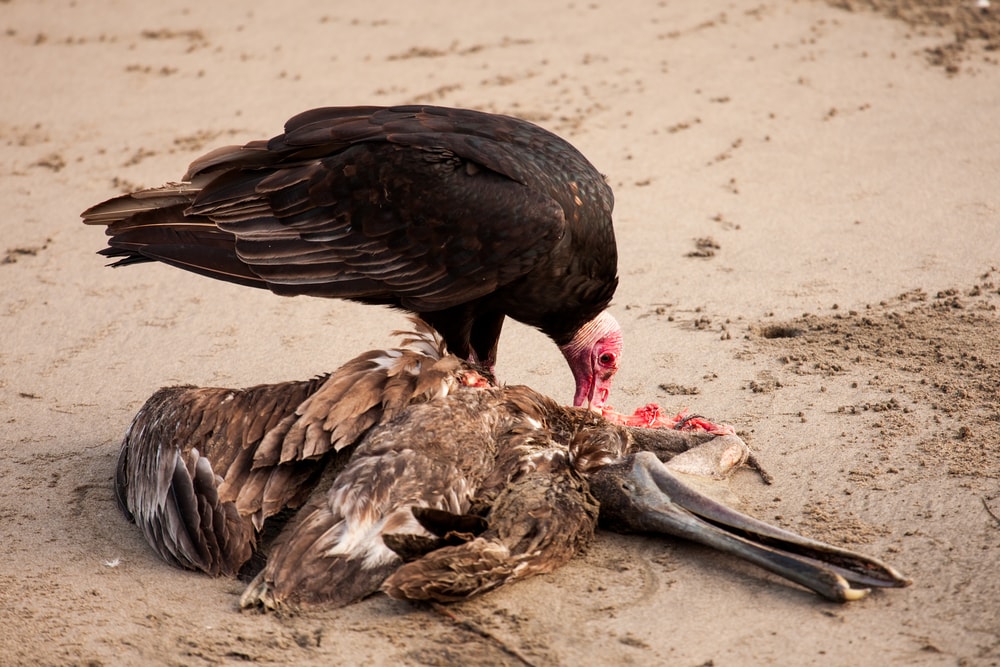
What do buzzards eat? They eat animal carcasses. The Palm-nut Vulture is the only one that eats a vegan diet. Vultures also hunt small animals and attack vulnerable prey. The common prey includes rodents, small birds, lizards, and insects. Vultures also feed on human garbage but are mostly carrion eaters.
Vultures have bald necks and heads for eating into carcasses without staining their bodies. Their strong immune system facilitates this eating habit. If you were wondering, now you got it.
You may also like: Scorpions In Texas: All About Texas’s Dancing Arachnids
Vulture Predators
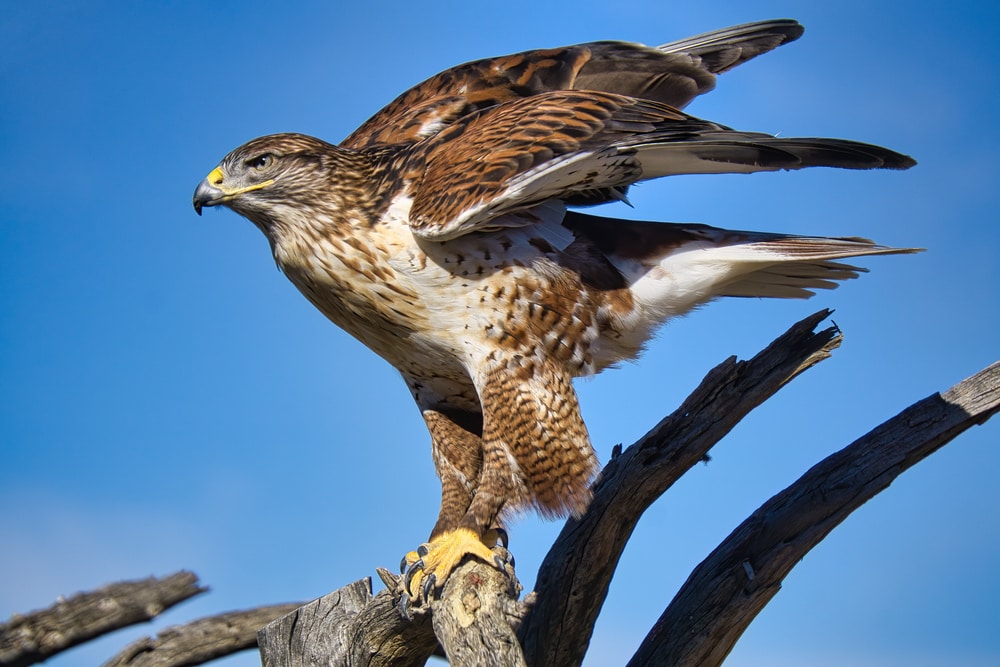
Vultures are vulnerable in the wild. They have predators such as wild cats, snakes, eagles, and hawks. They are petrified of hawks who are not scared to hunt vultures. Full-grown vultures are enormous, reducing the number of predators trying to prey on them. Their size is key to their survival. They are not aggressive towards live prey because they eat carrion.
You may also like: Learn More About the 22 Majestic Types of Hawks: Complete with Images, Facts, and More!
Native species
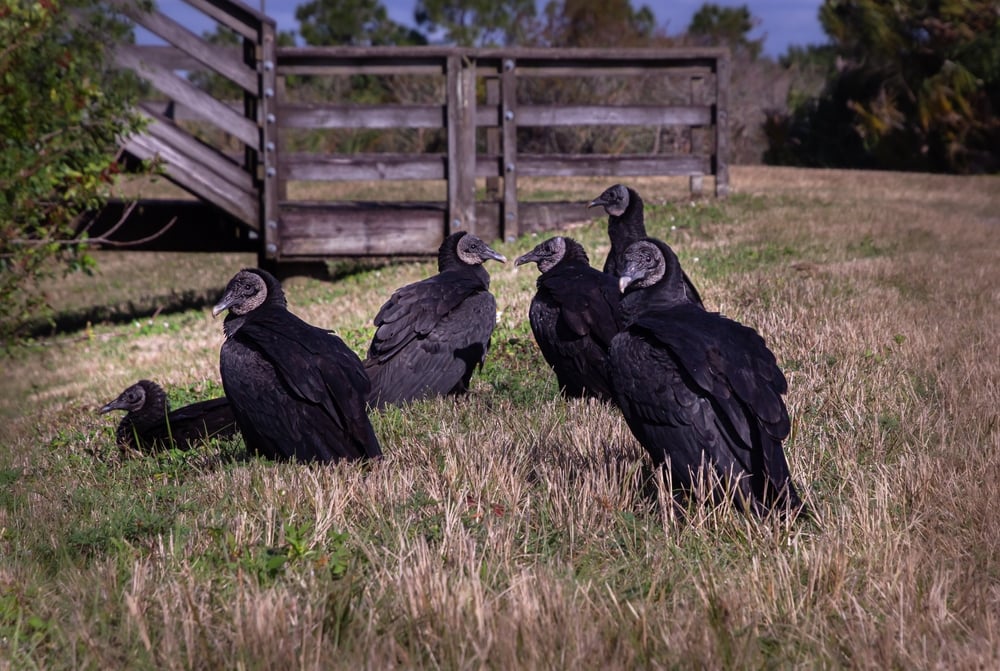
The Black Vulture and the Turkey Vulture are native to Texas and North America. Most of the other vultures originate from South America, in Brazil or Argentina. Old World Vultures are not in Texas. They are native to Asia, Africa, and Europe.
Fun Facts About Vultures
Biggest/Longest
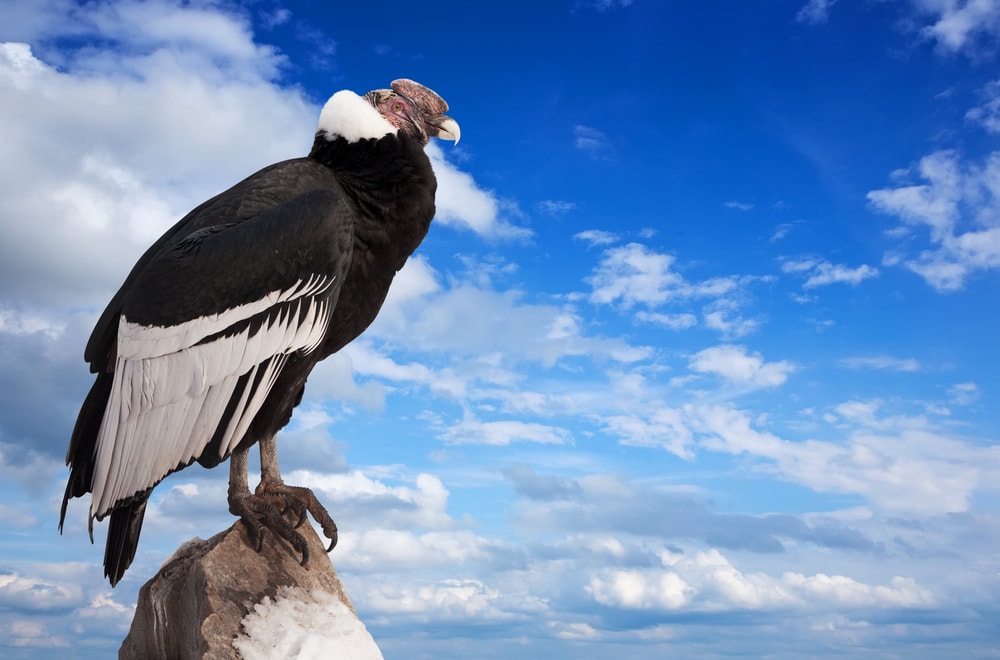
The Andean Condor (Vultur gryphus) is the biggest one in the species. It is also one of the largest among birds. It has a wingspan of 3.048m (10 feet), weighs 33 pounds (14.97kg), and is 3.3 feet (1m) long. It has a wedge-shaped and short tail with broad wings. Also, it is black, as its name states. This bird prefers to live in areas with heights of up to 16,000 feet (4876.8m).
Wingspan
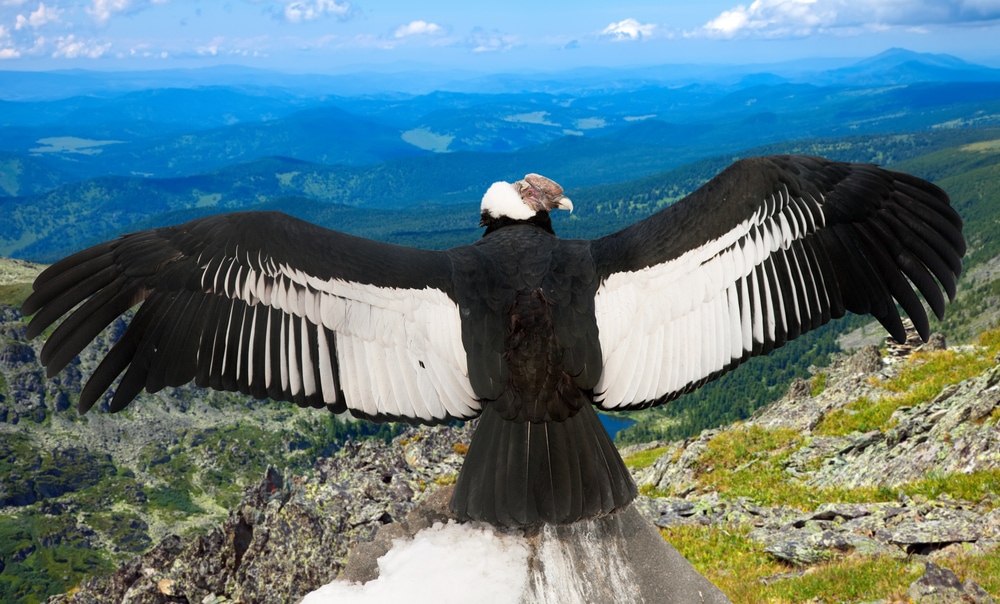
The average wingspan of vultures is between 1.3m (4ft) and 3m (9ft). The Andean Condor has the biggest wingspan, while the black Vulture has the smallest. Vultures’ wingspan varies depending on their species and the adaptation to their habitats. Vultures with bigger wings operate well in high wing tides because they glide rather than flap their wings.
Strong and broad wings allow vultures to move around for hours, searching for a meal. They eat a lot when they find one because of the considerable uncertainty of finding another carcass anytime soon. Many other scavengers in the wild also look for these carcasses, such as eagles, hawks, and crows.
Life Span
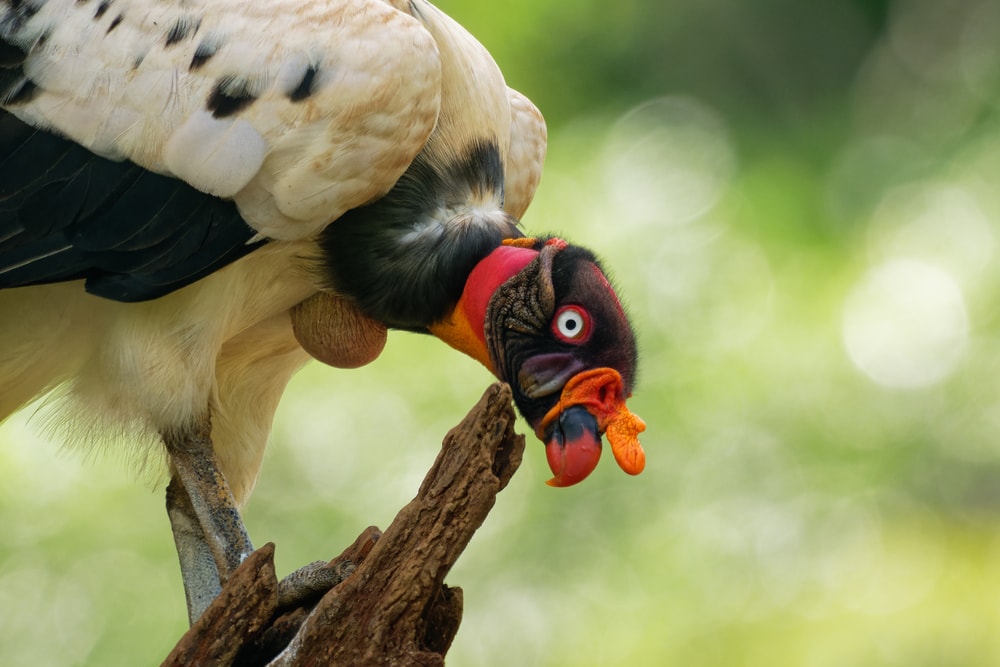
Vultures live up to 30 years with a minimum average of about ten years. The King Vulture lives the longest while the black Vulture has one of the shortest lifespans. Vultures live to 30 years in captivity. The highest recorded age for a wild vulture stands at 16years. It can be more because banding vultures for records is difficult.
How do buzzards poop?
They defecate on themselves as a cooling agent. Scientists refer to it as urohydrosis. It helps them survive high temperatures by cooling blood vessels on their feet.
You may also like: 45+ Most Common Spiders In Texas (With Pictures)
Are Vultures Considered Invasive Species?
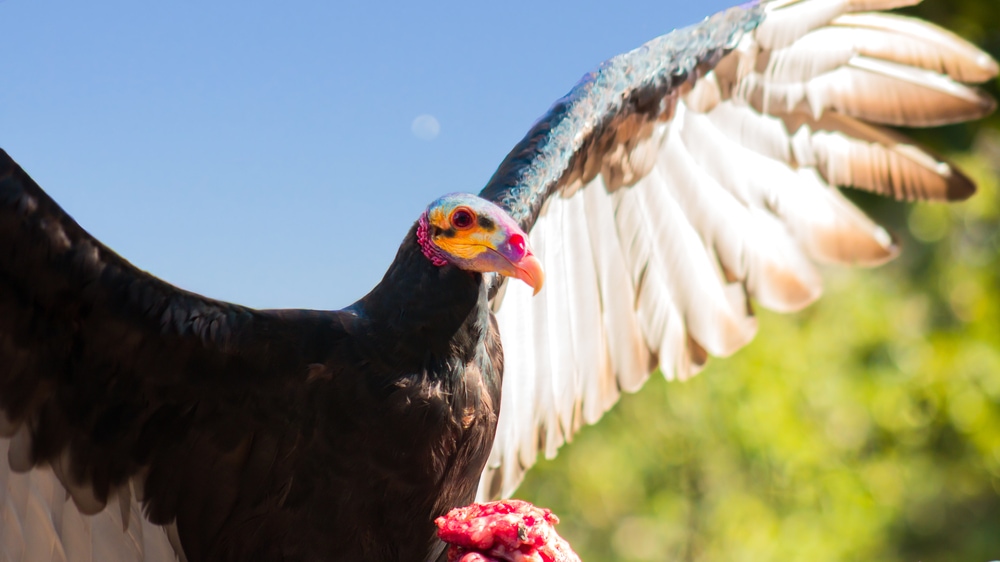
Vultures are non-invasive species because of their feeding habit. They do not attack live prey except for exceptional cases when they kill small rodents and birds for a meal. They eat dead carcasses, which give them a role in cleaning up the environment. They rarely appear in public unless they spot a dead animal. They can smell a dead carcass from miles away because of Sulfur emissions.
Is Texas an Ideal Habitat for Vultures?
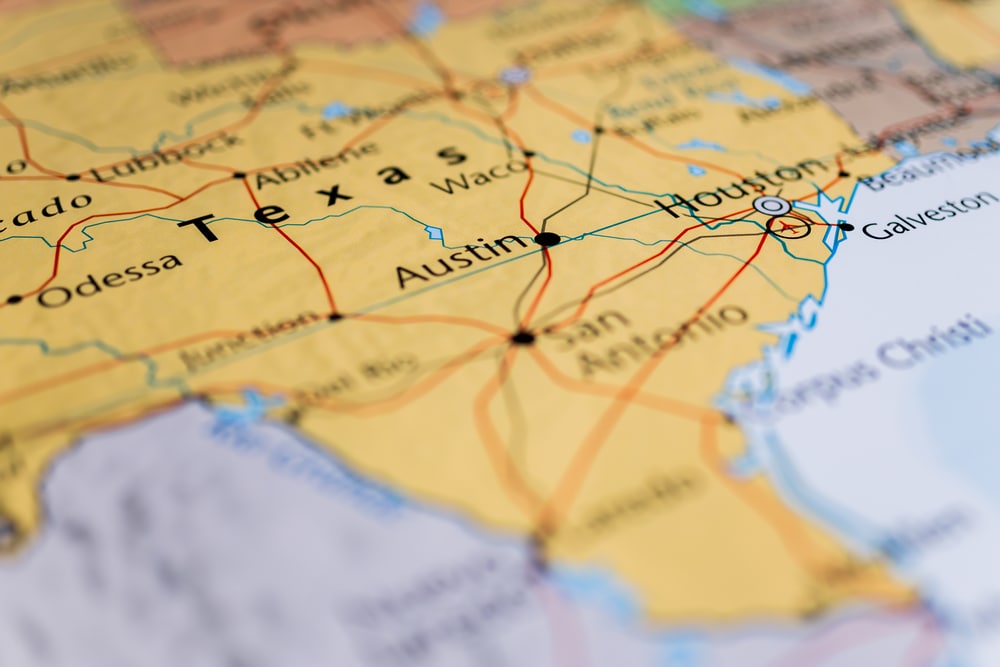
Yes, Texas is an ideal habitat for vultures. Vultures like an open country which they get in Texas. They can roost on tall trees and cliffs, also vantage points for their hunts. Buzzards in Texas are mainly the Black Vulture and Turkey Vulture. Other New World Vultures are also present but in small numbers. Texas laws also prohibit the hunting of vultures under the Migratory Bird Treaty Act.
You may also like: Check Out the Different Types of Birds in Pennslyvania and Where You Can Spot Them: With Images, Facts, and More!
Threats from Habitat Loss
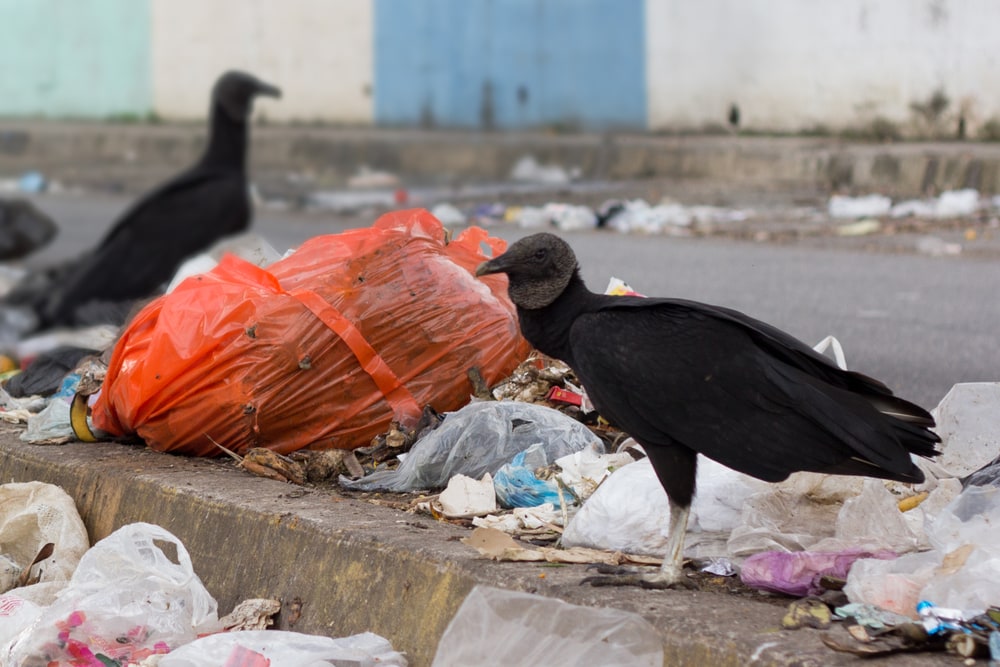
Habitat loss is a crucial threat to vultures and other birds. Humans now occupy a huge chunk of land, which is a disadvantage for vultures. They get limited space for hunting, forcing them to eat human garbage in some scenarios. In other cases, they might eat poisoned carcasses which lead to death.
Climate Change
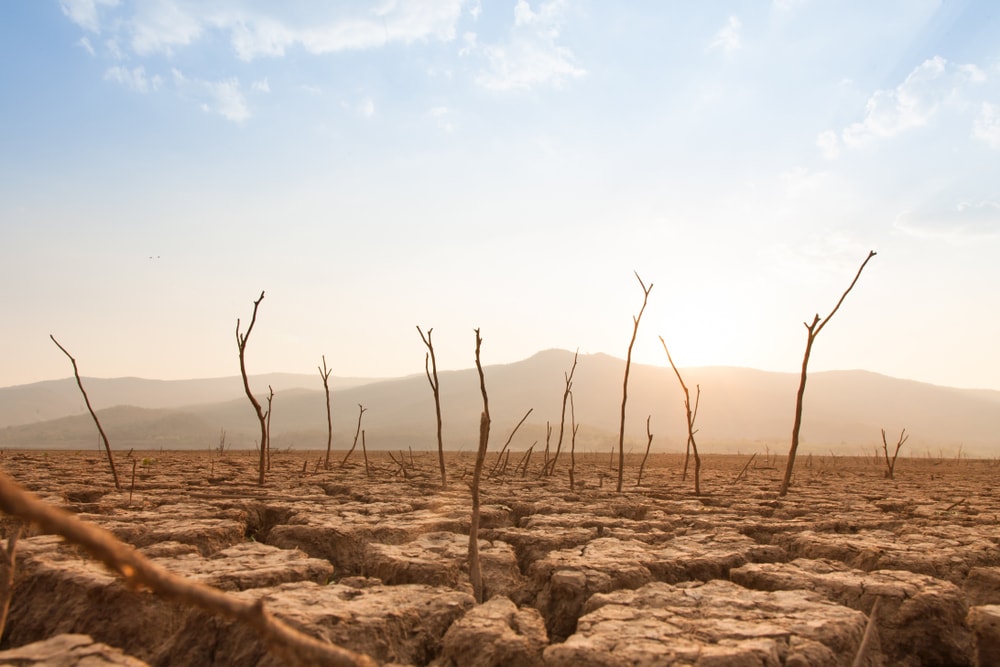
As the globe is getting warmer, the condition affects vultures significantly. High temperatures restrict their range. Vultures travel long distances in search of food. They can no longer do so because they have to save more energy. It results in thermoregulation as high temperatures increase their metabolic rate.
You may also like: Check out the Different Animals, Birds, and Insects That Lives in the Amazon Rainforest: With Images, Facts, Descriptions, and More!
Vulture Interactions with Humans
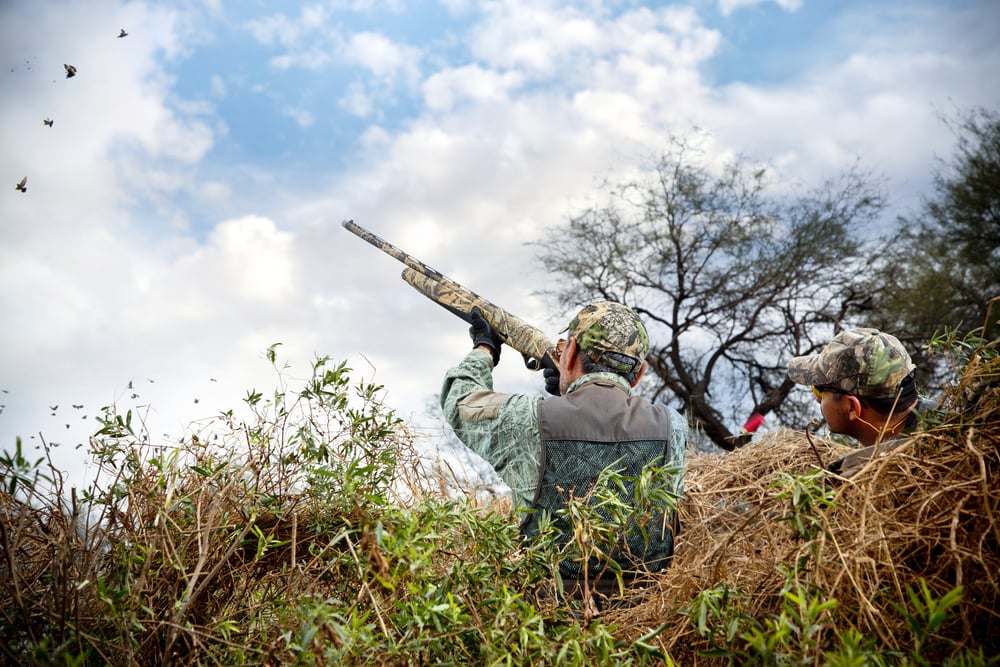
Humans hunt vultures to kill them. Due to a lack of habitat, it is common to find vultures around humans. There are state and federal laws that prohibit the hunting of vultures. Humans and vultures now co-exist. Even though vultures clean up carcasses, they dirty the environment with feces and acidic vomit. Vultures are not a threat to humans.
Cultural References of Vultures: Myths, Legends, Nicknames, Events
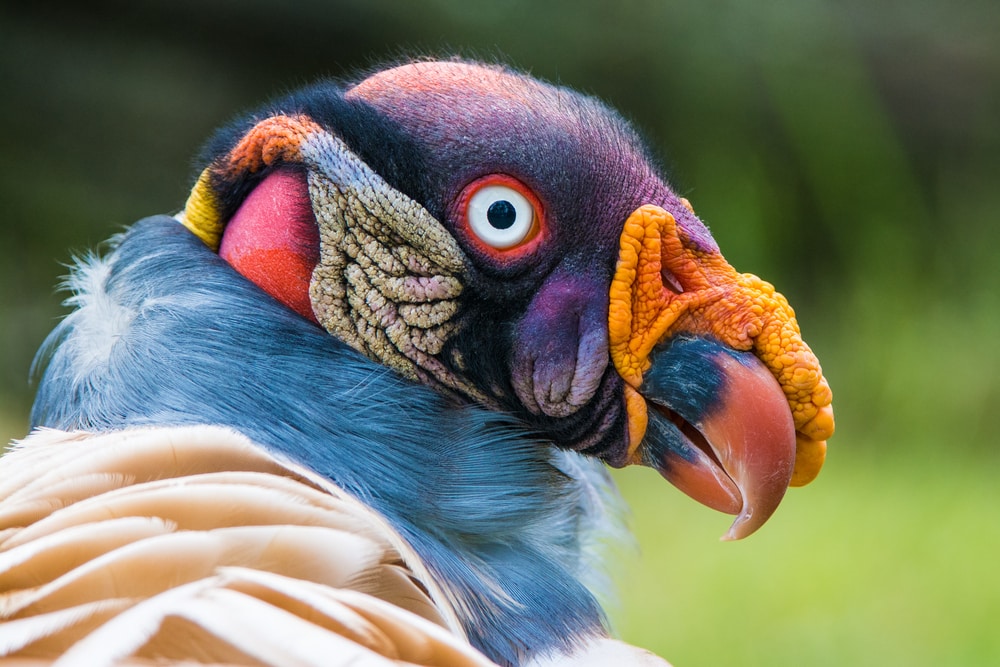
Snakes are prey and predators to vultures. Aggressive vultures such as the Turkey Vulture attack small snakes and kill them. Giant snakes like pythons won’t mind killing a vulture for a meal. Vultures rarely attack live prey unless they deem them vulnerable or sick. It gives them an advantage because they are not adapted to predation.
People often call vultures, buzzards or bloodsuckers. They symbolize seriousness, equalizing, rebirth and death. People think of them as a link between death and life. Humans often think of vultures as bad omen.
You may also like: The 14 Species Of Hawks In Texas And How You Can Spot Them
Other Notable Types of Vultures Elsewhere in the U.S. and Around the World
1. King Vulture (Sarcoramphus papa)
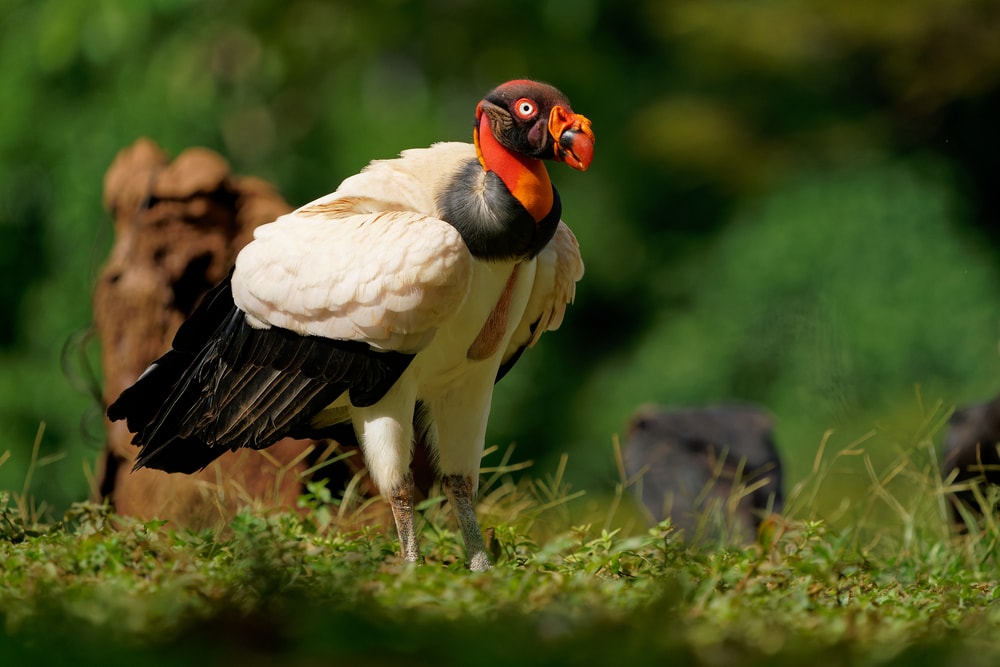
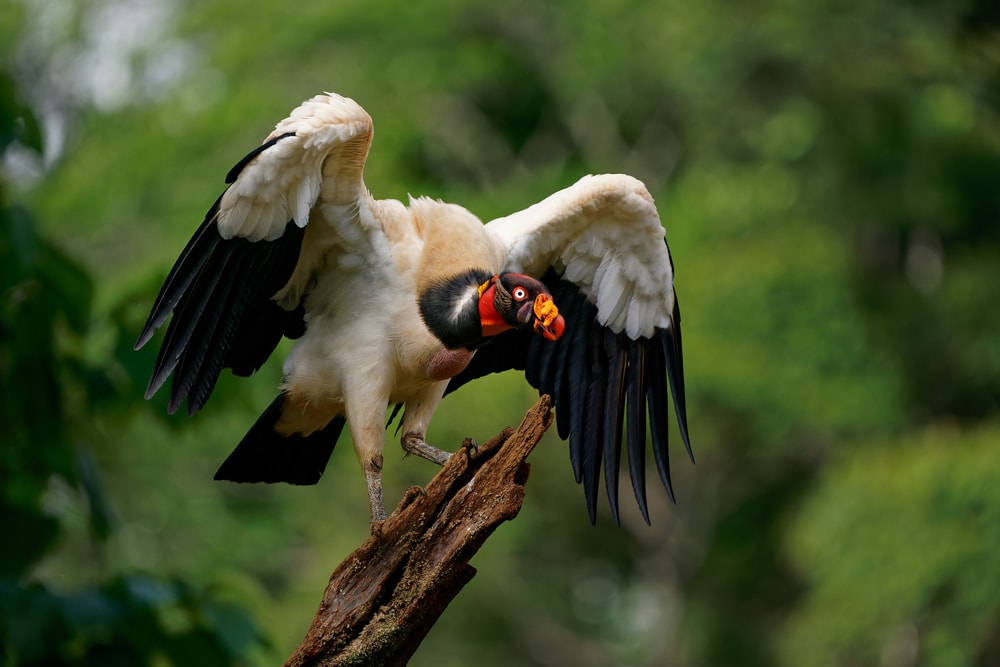
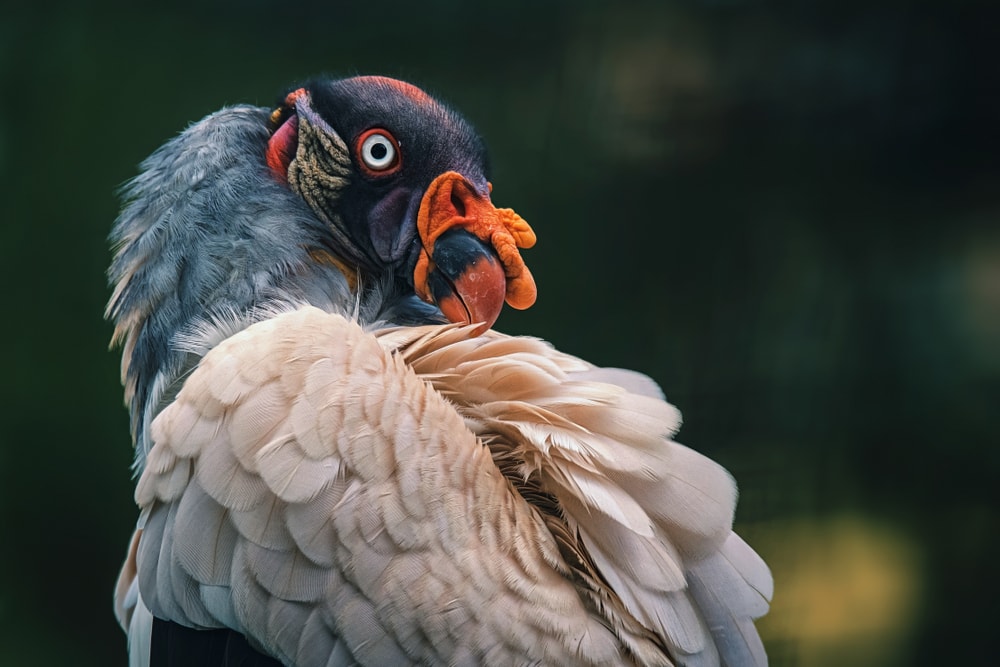
The King Vulture is white with black bands. It has broad and short wings. Its head is bald with many colors, including blue, purple, yellow, green, and orange. The female and male vultures look alike. They survive better in hot conditions.
An adult King Vulture is about 2.5 feet (30in) in size. At this size, it weighs approximately 3.7 kilograms (8lb). They are almost the size of the biggest Vulture, the Andean Condor. They have a fantastic sense of smell and keen eyesight. Its strong beak allows it to tear through carcasses easily. They eat the eyes first because that’s where they gain the most nutrients.
2. Andean Condor (Vultur gryphus)
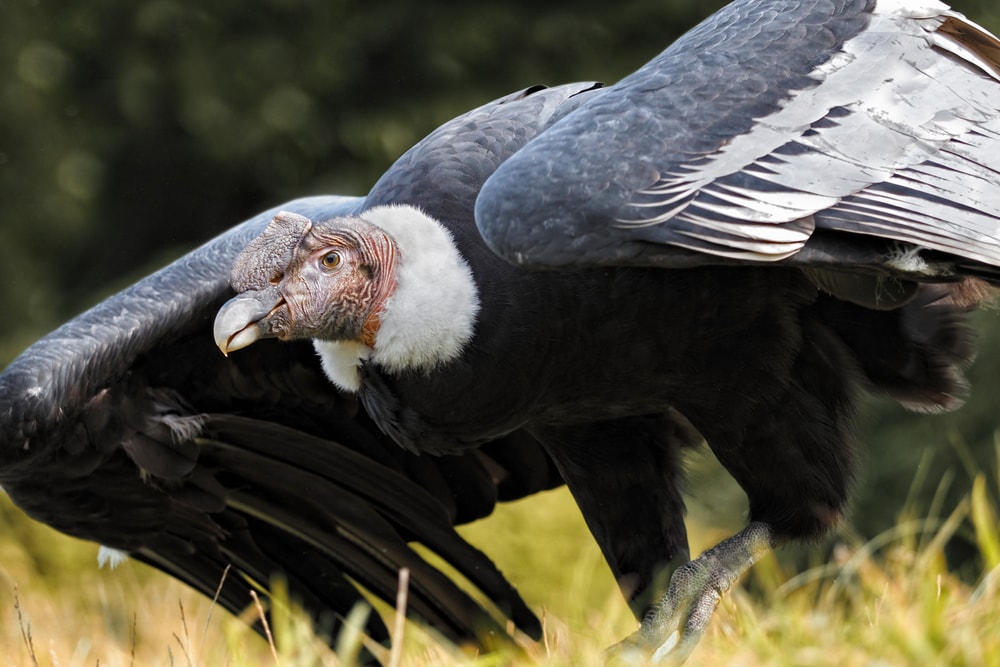
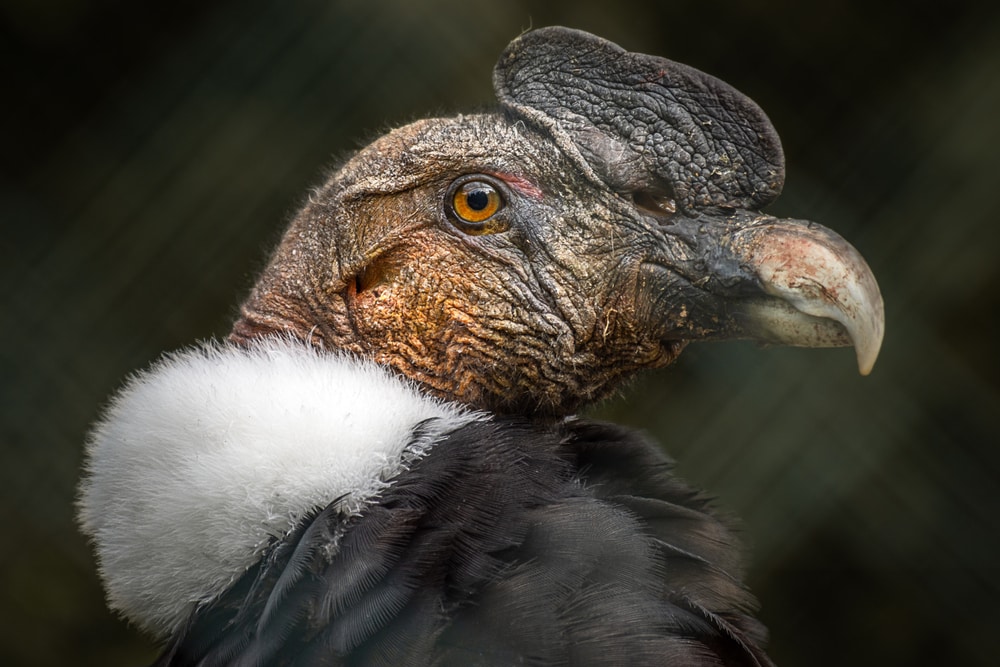
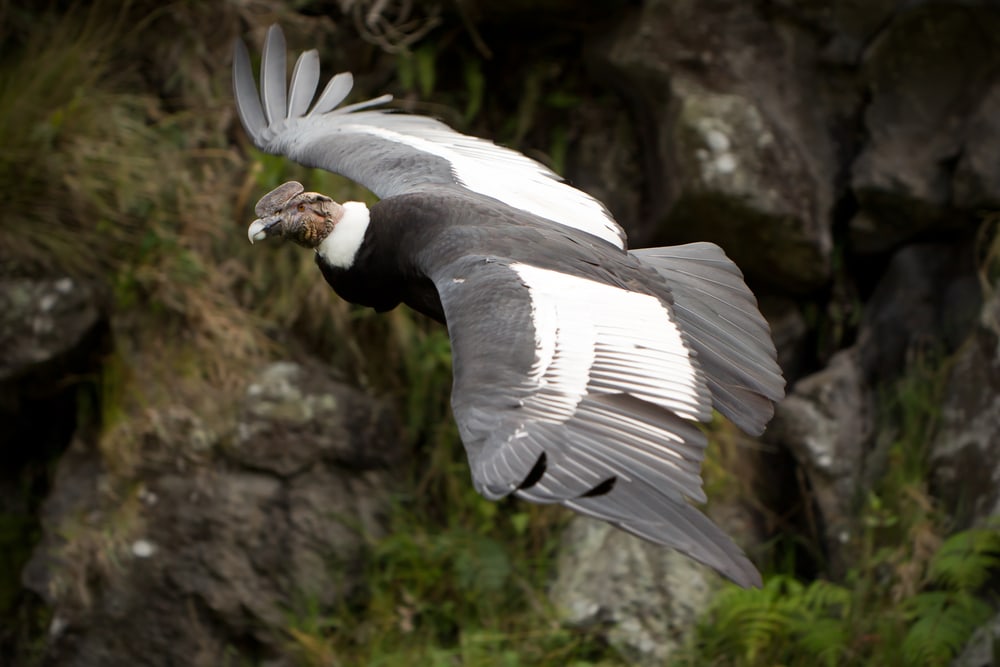
The Andean Condor is the biggest New World Vulture. It can weigh up to 25 pounds (11.34kg) and grow wings to approximately 10 feet (120in). The females are not as big as the males. They have white patches on their wings, a white-collar on the neck, and a black body. The males have a caruncle, a fleshy lump on their bald red and gray heads.
The Andean Condors have sharp claws with hooked and large beaks. It is an endangered vulture species because of overhunting and pesticide poisoning. People hunt down the Andean Condor, thinking they are responsible for killing their livestock.
3. California Condor (Gymnogyps californianus)
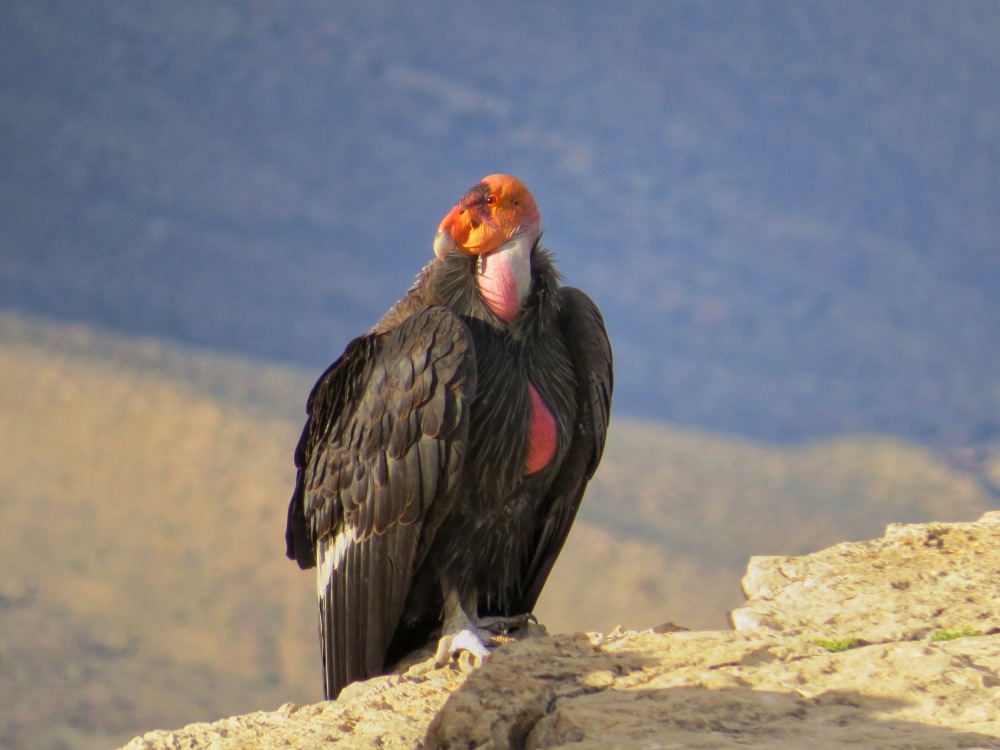
The California Condor is almost the same size as an Andean Condor. Its wingspan is about 10 feet (120in). It can grow up to 4.5 feet (54in) and weigh about 31 pounds (14.06kg). They live up to 60 years in the wild which is a crazy stat as most vultures have an average lifespan of 20 years.
The California Condor is also an endangered species like the Andean Condor. Zoo breeding is bringing the vulture back to life. They prefer roosting on rocky cliffs because of isolation. They eat so much when they find a meal that forces them to rest before getting back in the air. California Condors are good hunters, allowing them to spare more time for grooming, sunning, and preening.
4. Greater Yellow-Headed Vulture (Cathartes melambrotus)
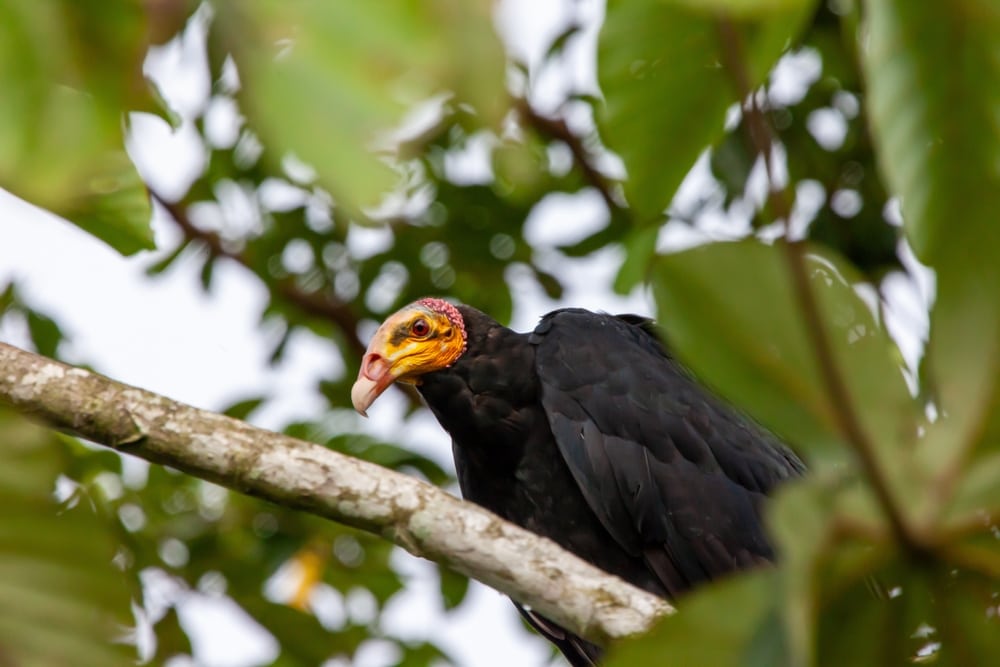
Scientists split the yellow-headed vultures after initial grouping in the same species. The Greater Yellow-Headed Vulture is a giant vulture with a body length of about 30 inches (2ft), weighing up to 1.6 kg (3lb), with a wingspan of about 70 inches (5ft). It has a pale orange or yellow bald head with a black body plumage.
It has a characteristic of low hisses and grunts because it does not have a syrinx. The Greater Yellow-headed Vulture matures in 6 years. It survives in open habitats even though its preference is tropical forests. It is because they like sheltering in trees. It finds small animal carcasses because of its top sense of smell. They feed together, and they are docile, unlike most vultures.
5. Lesser Yellow-Headed Vulture (Cathartes burrovianus)
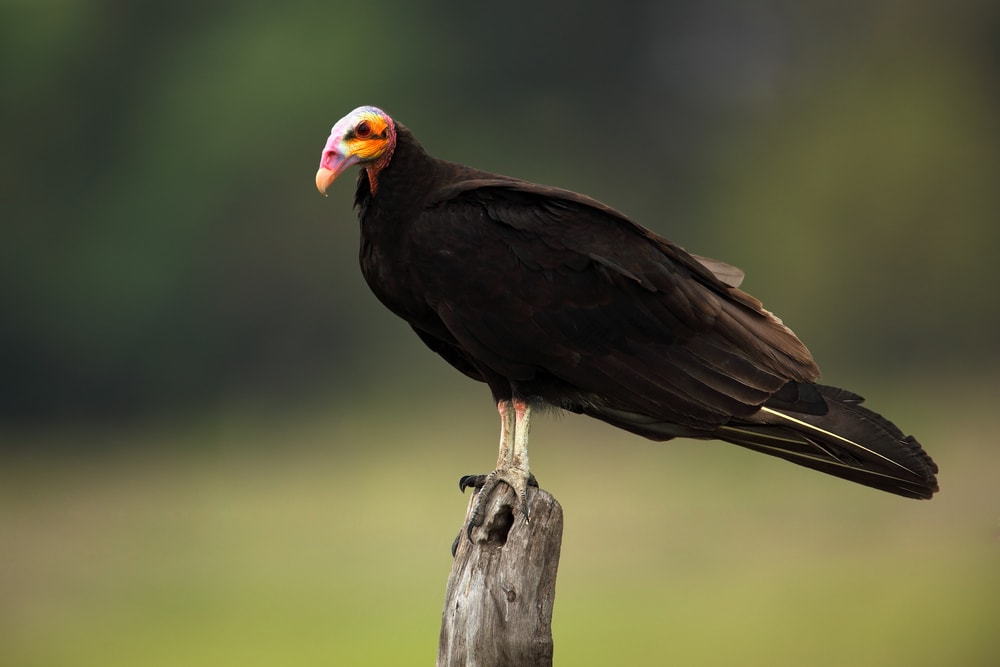
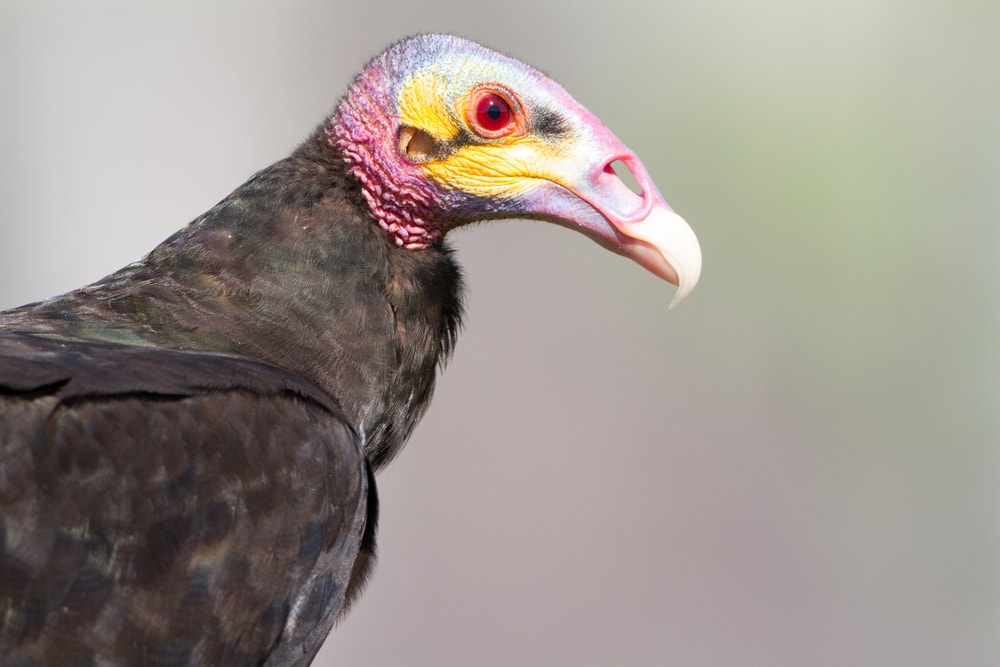
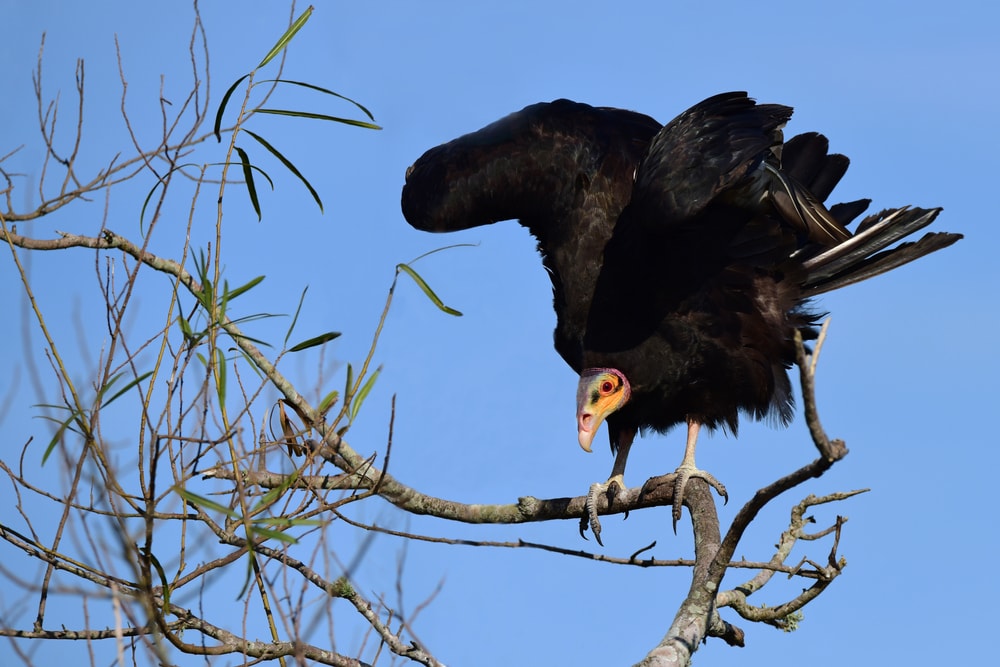
It is a smaller version of the Greater Yellow-Headed Vulture. It weighs up to 1.55 kg (3lb) and grows to 65 inches (5ft). A full-grown adult is about 26 inches (2ft) big. It also has a great sense of smell, like the Greater Yellow-Headed Vulture. The Lesser Yellow-Headed Vulture earned the reputation as one of the top birds with exceptional smell senses.
The Lesser Yellow-Headed Vulture lacks a syrinx, limiting the bird to hissing and grunting. They do not have songs or calls like other vultures. People confuse it for a Turkey Vulture. If you see one, take a closer look. It is an intensive hunter taking a lot of time foraging and soaring for a meal.
You may also like: Check out These Wonderful Owls You Can Spot in Florida: With Images, Facts, and More!
FAQs
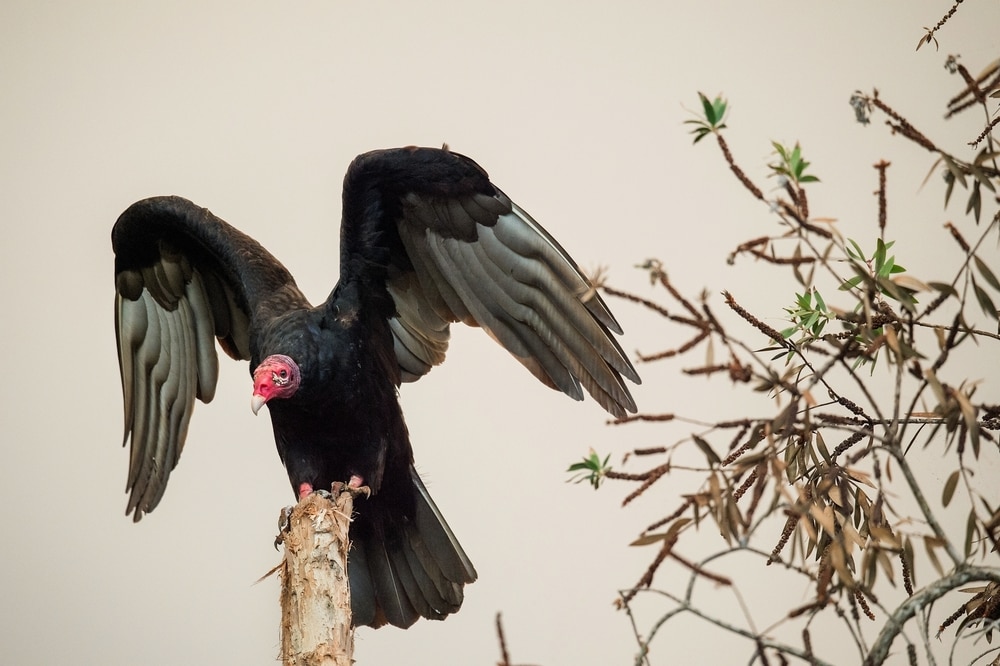
What does it mean when vultures are around?
Vultures are attracted to carcasses. If you spot some, chances are there is a dead animal near you. Check around to confirm if there is a carcass around where you are.
Why are vultures on my roof?
Vultures can rest on your roof or they are hunting. They might have seen a food source nearby and are waiting to strike.
Why are vultures circling my house?
The vultures are waiting for a hostile predator to finish eating or they are on a hunt. Also, they might be playing within the group.








